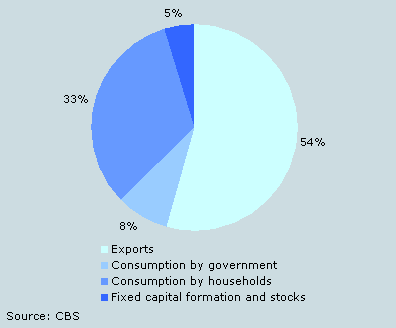Less pollution by heavy metals in spite of economic growth

In terms of environmental burden, emissions of heavy metals into water decreased by nearly 30 percent in the Netherlands in the period 1995–2004, while the economy grew by more than 25 percent. The decrease was mainly the result of the application of composite fillings and amalgam separators - which remove mercury particles - in dental practices, the reduction of pollution from by cupriferous paint used on recreational boats, and new measures to reduce cadmium in the fertiliser industry.
Economic growth and emissions of heavy metals into water, 1995–2004

Highest emissions per euro value added in transport
Emissions of heavy metals per unit of value added decreased in all sectors between 1995 and 2004. The smallest decrease was in the agriculture and transport sectors. These sectors generate relatively little value added and emit relatively large amounts of heavy metals.
Emissions of heavy metals per unit of value added

Discharges for exports
Most emissions of heavy metals into Dutch surface water are ultimately on account of foreign buyers of Dutch products. More than half of emissions of heavy metals into water can be accounted for by the production of goods that are exported. Transport, manufacturing and agriculture are examples of sectors which mainly discharge heavy metals in aid of exports. Emissions by the government and care and business services sectors, on the other hand, are mainly in aid of domestic consumption.
Assignment of emissions of heavy metals to final expenditure

Less pollution than emissions
Households discharge most heavy metals, followed by the government and care, and transport sectors. This does not mean that these sectors all pollute the surface water in an equal measure. Households, government and care discharge waste water mainly into the sewerage system. As waste water treatment plants remove a large part of heavy metals from the waste water, pollution of surface water is only one quarter of the amount discharged into that water. The pollution of surface water by the agriculture sector is greater than emissions in this sector, as leaching and seepage via soil and groundwater forms an extra indirect source of emission.
Emission of heavy metals and pollution of surface water, 2004

Sjoerd Schenau, Roel Delahaye, and Maarten van Rossum